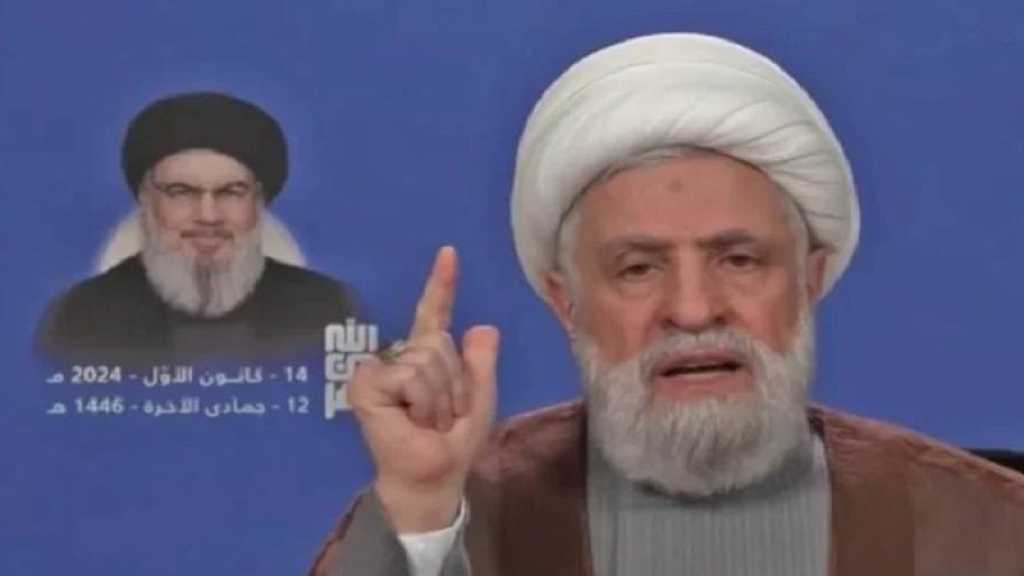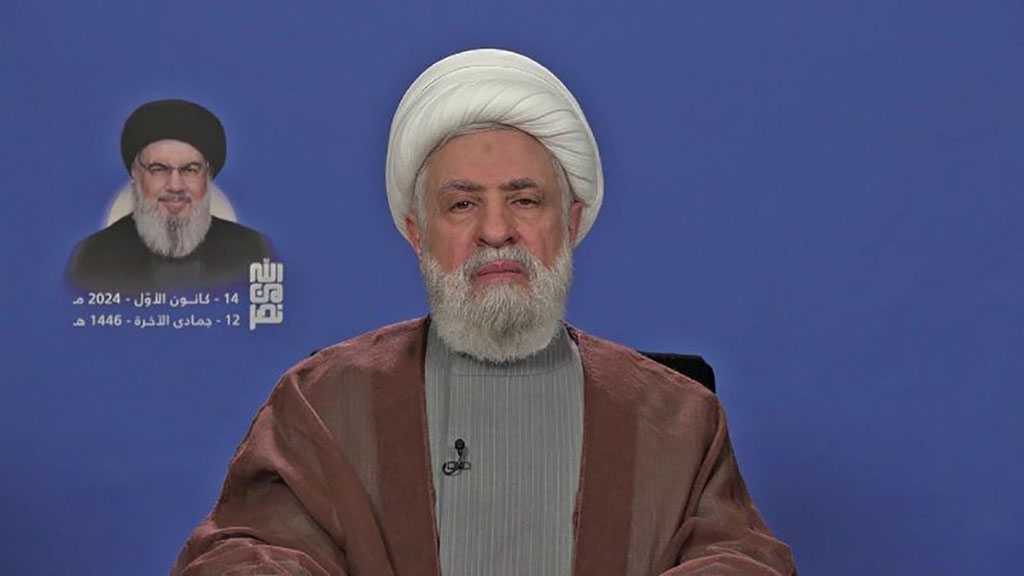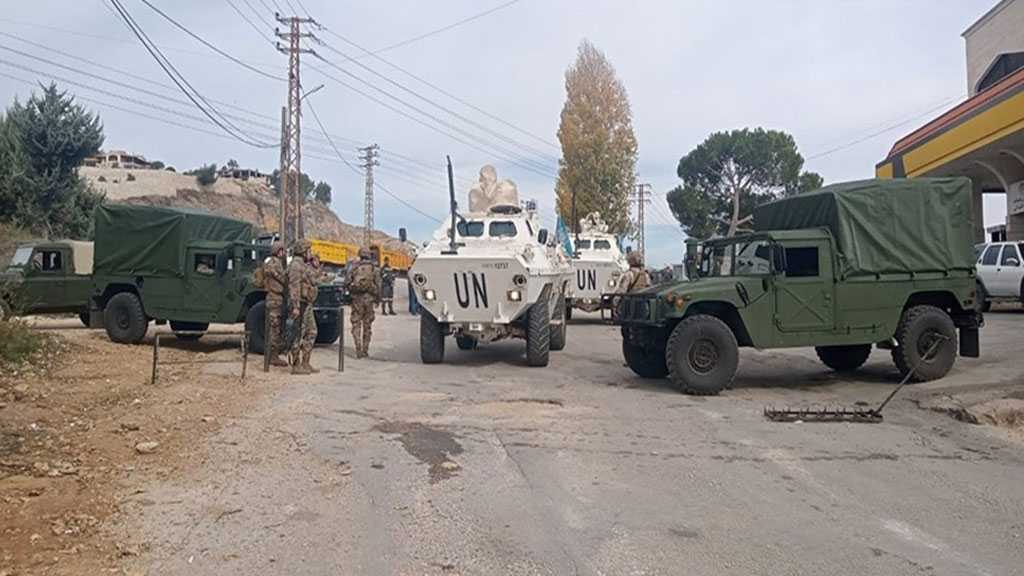
Diary of the ’Israeli’ April 1996 Aggression
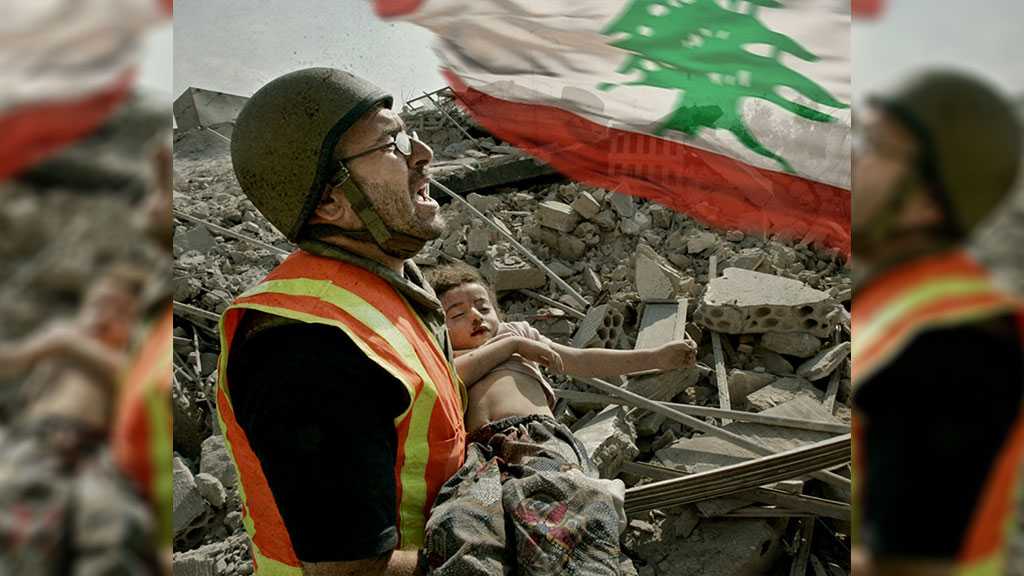
By Al-Ahed News
In April, 1996, the “Israeli” entity waged a 16-day aggression on Lebanon. The “Israelis” called it “Operation Grapes of Wrath”, to us it is known as the April War. 146 people were martyred. 300 civilians were wounded. Four Lebanese soldiers were martyred and eight wounded. Two Syrian soldiers were martyred and five wounded. 14 Resistance fighters were martyred, among them eight who were on military duty. The rest were martyred in strikes.
Below is the series of events detailing every day of those 16 days of aggression.

Day one of the April 1996 Aggression: April 11
It was at this time of year, back in 1996, that the "Israeli" enemy launched its military operation "Grapes of Wrath" against Lebanon, committing massacres, killing children and displacing many families.
The aggression was faced by the Resistance which was prepared to respond and confront; this Resistance overturned existing equations placing "Israel" in a tough position, forcing it to reconsider its calculations and, for the first time, take into account the existence of this "Resistance and its Mujahideen."
All along, the United States backed "Israel" in its April aggression, on all levels.
US President Bill Clinton wanted Sharm al-Sheikh Conference of March 1996 held under the title of "Anti-terrorism", to undermine resistance in occupied Palestine and Lebanon, to pressure the opponents of any negotiated settlement, and to give a lift to his ally, “Israeli” Prime Minister Shimon Peres' tumbling ratings in the “Israeli” entity.
Shimon Peres, at the time, was eyeing the military option as the only way out of his domestic predicament.
And so, on April 11, 1996, "Israeli" Occupation Forces [IOF] began to evacuate the settlers' population from occupation settlements in north occupied Palestine, as a prelude to its "Grapes of Wrath", which the enemy began with an air raid on a hill west of Baalbek City, followed by constant shelling of Sujud and Rihan Heights, and Rafi'a Mountain.
Zionist shelling also targeted a Lebanese army checkpoint, wounding two of its personnel. And for the first time since the "Israeli" invasion in 1982, occupation forces shelled Beirut's southern suburbs wounding a number of civilians.
With persistent Zionist shelling of the villages in the South and Western Bekaa, and Beirut's southern suburbs, better known as Dahiyeh, the Islamic Resistance retaliated by bombing "Israeli" posts and those of its collaborators.
That evening, Hezbollah Secretary General announced that the Resistance would respond harshly to that attack, stressing that the “Beirut – Kiryat Shmona” balance of terror is unacceptable.
As the days of aggression unfolded, "Israeli" bombing pace, harshness and intensity increased, and with it the Resistance response as well.

Day two of the April 1996 Aggression: April 12
The Zionist war machine continued its aggression using its artillery to systematically bombard villages and towns in the south and western Bekaa.
Shelling of Dahiyeh continued for the second day, and a Syrian officer was martyred when a Syrian army post came under attack in Raml al-Aali area, near airport road.
The first brutal mass crimes committed under the title of "Grapes of Wrath" were on this day when the southern town of Suhmur was targeted, and consequently, a massacre occurred.
People had been out stocking up on goods between curfew warnings, when without warning the "Israeli" occupation army – always thirsty for blood – did not honor the lifted curfew it had declared itself, and started shelling the town killing nine martyrs, including a child and three girls, and wounding another nine.
The Islamic Resistance in Lebanon responded to the aggression by raining down Katyusha rockets on enemy occupation settlements, in particular the settlements of Kiryat Shmona and Metula.
With the commencement of the rocket retaliations, a political message was also delivered to “Israeli” leaders connotatively stating that Hezbollah will continue to respond and confront the aggression, and maintain the vigor, pride and dignity of the Lebanese people and nation.
Zionist brutal actions and their targeting of unarmed civilians drew Lebanese, regional and international reactions of condemnation of the military operation.
Meanwhile, the steadfastness of the Islamic Resistance and its successful response to the aggression rallied wider popular support, and with that began the first steps toward over turning the existing equation in the confrontation, which, in the absence of deterrents or confrontation in Lebanon called "resistance", had, until that moment, always been in "Israel's" favor.
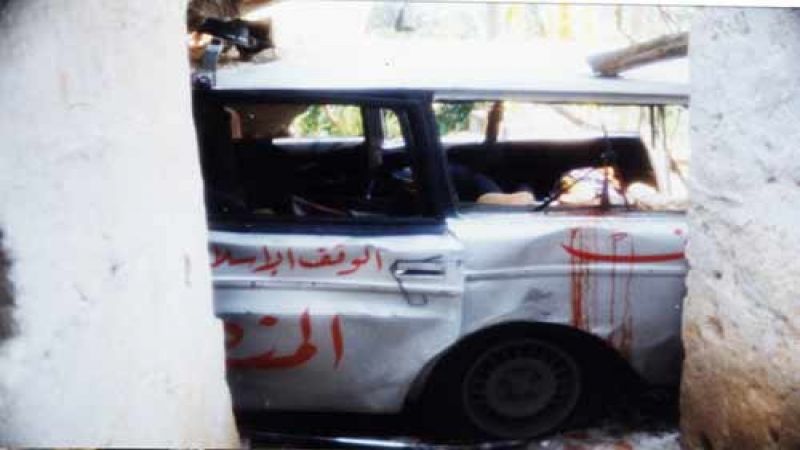
Day three of the April 1996 Aggression: April 13
After the Suhmur massacre on the second day of the April aggression, al-Mansouri massacre followed on the third day.
Six people were martyred and seven wounded when the ambulance they were riding in, believing it would be exempted from "Israeli" shelling, was a bombing target for enemy helicopters.
The six martyrs were two women aged between 28 and 50; the remaining were children aged between 2 and a half months and 10 years old.
"Israel" continued to shell the villages and towns of Adsheet, Jibsheet, Haruf and Mayfadun. It also attacked a Lebanese army position in Habbush and carried out attacks on the districts of Tyre and Nabatiyeh.
In parallel, the Mujahedeen resistance shot down an Apache helicopter on the verge of bombing civilian homes, and a resistance rocket hit a Merkava tank in al-Dabshah enemy post, killing and wounding all its crew.
In the meantime, Katyusha rockets rained down on "Israeli" occupation settlements, Nahariya, Gideon and Kiryat Shmona in particular.
The Resistance response prompted "Israeli" Foreign Minister Ehud Barak to admit that “Hezbollah, despite ‘Israel's’ military operations, is still capable of launching Katyusha rockets at any moment into the Galilee.”
With the aggression and targeting of civilians continuing, it was high time to mobilize the Resistance forces. The Secretary General of Hezbollah His Eminence Sayyed Hassan Nasrallah, addresses the Mujahideen in a speech, saying, “Let us rise up to lift humiliation from our nation, killing from our people, and occupation from our land, and let's be ready to meet God and His Prophet and the Imams [PBUT].”

Day Four of the April 1996 Aggression: April 14
As the “Israeli” aggression on Lebanon ran on, April 14 witnessed the commencement of diplomatic talks, especially after the Mansoury massacre which revealed to the world the cruelty of those who caused it.
Bombardment continued on villages in south Lebanon and the western Bekaa. Meanwhile, the resistance kept the pressure on the enemy's outposts.
Diplomatic calls between Egypt, Syria, France, Iran, US, the Zionist regime, Russia, and Lebanon were taking place in order to try and achieve an immediate cease-fire.
On the fourth day of the aggression, Lebanon's former Prime Minister Rafik Hariri, made his way towards Arab countries and France. Meanwhile, Lebanon's representative to the UN filed a complaint regarding the "Israeli" aggressions on Lebanon.
Although supportive to the “Israeli” entity, after Lebanon's complaints, the US suggested an initiative that was more of a basket of “Israeli” demands.
In the meantime, the US initiative was faced with a French initiative which was tipped more to the endorsement of Lebanese's expectations, despite requiring a few amendments.
As diplomatic talks were taking place, Lebanon preferred neither to accept nor reject any of the two initiatives.
The Islamic Republic of Iran had a prominent role in diplomatic talks, where it considered the Lebanese's resistance truly countered the dark face of the “Israeli” enemy. Iran also sent aid and medical relief to Lebanon.
On the battlefront, "Israeli" bombardment continued, and the resistance's response continued, marking it as the day with the greatest amount of Katyusha rockets, fired towards “Israeli” settlements. An “Israeli” officer stated, “The Katyusha rockets fired were so many we didn't even count them”.
The major event of the fourth day of April aggression was the scene of 70 Islamic Resistance fighters broadcasted by al-Manar Channel, showing their sacrifice and will to take revenge from the “Israeli” enemy.

Day Five of the April 1996 Aggression: April 15
Day five of the 1996 April Aggression was momentous due to the heavy bombing of the cities of Tyre and Nabatiyeh in South Lebanon in an "Israeli" bid to force the civilians who had remained in those areas to migrate north.
Some four hundred 155- and 175-mm caliber bombs of were fired on Nabatiyeh that day.
Military analysts in "Israeli" Haaretz daily revealed at the time that the "Israeli" army failed to force the migration of the people of Tyre, saying, "It's not that easy that people leave this city".
In an escalation of aggressions, the "Israeli" army broadcasted a statement via the enemy agents' radio station ["Israel's" collaborating army, the then Lahd army, had a radio station at the time which used to broadcast the "Israeli" army's threats to Lebanon's citizens], saying that they considered the expanding their assaults, including the evacuation of Zahraneh area, as well as the southern city of Saida.
In the afternoon, the Zionist artillery fired villages in the western Bekaa as "Israeli" warplanes executed nine raids with more than forty 500,000-pound bombs, in addition to vacuum missiles.
Three citizens were killed and scores were wounded in the raids.
Warplanes repeatedly targeted vital civilian facilities and buildings. A partial blackout occurred after abolishing the Bsalim electricity plant which provides electricity to Beirut, Mount Lebanon, North Lebanon, and the Bekaa.
"Israeli" raids also hit a two-story house in Mrayjeh in Beirut's southern suburb, wounding eight. In addition, night raids took place on Soghbin in western Bekaa, abolishing a house and killing one civilian and wounded his wife and children.

Day Six of the April 1996 Aggression: April 16
The "Israeli" aggressions went on.
Hostilities started at 4 a.m. when two planes struck the Palestinian official Mounir Makdah's house in Ein al-Helwe refugee camp in southern Lebanon. The raids targeted the house directly. Makdah's eight-month-old son was the victim.
Between 6 a.m. and 2 p.m., 700 bombs and rockets of different calibers were fired on southern and Bekaa areas.
The enemy agent's radio station continued broadcasting statements and warnings; and on this day, it warned, “‘Israeli’ troops will prohibit any movement on the way South, will consider any vehicle on that road as hostile, and will immediately strike.”
A Zionist warplane hovered over a civilian car with two Lebanese army soldiers in Bazouriyeh, South Lebanon. The soldiers, taking notice of the chopper, hid in a deserted house, but the plane bombed the house, killing the soldiers.
At noon, warplanes struck consecutive raids on Jmayjmeh village, destroying two houses and a shelter with forty citizens; Ayda Obadi, Fatima Ali Hamza [25 years old], Fadel Atwi [25 years old], and wounded ten other civilians.
At 2 p.m., “Israeli” warplanes struck Beirut's southern suburb, firing fourteen rockets at the airport and Hay el-Sellom, where four-year-old Israa Lakies was the victim.
In Bekaa’s Temnine Tahta village, an air raid killed a woman, Sanaa Khatib, and destroyed several cars.
At 5 p.m., "Israeli" warplanes raided over Borj Kalaway twice, killing a civilian, and wounded others.

Day Seven of the April 1996 Aggression: April 17
The seventh day of the April 1996 aggression witnessed a clash on the diplomatic front between the American and French initiatives. Meanwhile, the operational situation remained unchanged with the occupying forces continuing to bomb villages and towns, leaving a number of martyrs and wounded among the civilians.
The Islamic Resistance countered this bombardment by pounding enemy positions and occupation settlements with Katyusha rockets, which continued to pour down on settlements in the North [of occupied Palestine] to the extent that conflicting reports on the number of missiles started to circulate inside the Zionist entity.
That day, "Israeli" warplanes bombed the cities of Tyre and Nabatiyeh, as well as surrounding towns. Two houses were bombed in Shakra town, where about 50 people were sheltering. Divine providence saved another blood bath from occurring, which would have been added to the "Israeli" enemy's rich record of massacres, especially those of the April 1996 aggression.
In parallel, “Israeli” helicopters resumed bombing of ambulances in what appeared to be a daily habit of the occupation. Crew members of an Islamic Health Society vehicle were injured when their vehicle was bombed.
In response at this time, the Resistance Mujahideen continued to pound "Israeli" artillery positions that were bombarding our villages and towns. They Resistance also attacked "Israeli" occupation soldiers positions, inflicting their ranks with casualties.
On the diplomatic front, debate evolved on the French and American initiatives to the point of a clash between Washington and Paris. Moves made by former French Foreign Minister Ervé de Charette between Tel Aviv and Cairo, Damascus and Beirut, raised ire in the United States, especially with the Islamic Republic of Iran putting its full weight, in these consultations with the French.
The pace of the seventh day of the aggression was similar to the two preceding days – the 15th and 16th of April, 1996 – except for a most horrific scene ever witnessed by the Lebanese and the world. Thursday, April 18, was turned black when the Zionist forces committed a massacre in Nabatiyeh Fawka suburb and another massacre in Qana.

Day Eight of the April 1996 Aggression: April 18
On Thursday morning on April 18, 1996, the Zionist enemy dropped its loads of bombs and hatred on Nabatiyeh town, to wipe out the entire al-Abed family, as they slept in their house. Zionist fighter jets turned the 3-story home to rubble, mixed with the flesh of a mother and her seven children, who were sleeping on the first floor; without a single utterance by the United Nations...
Successive massacres... Qana washes its children with blood...
At about 2 p.m. on Thursday April 18, 1996, southern families taking shelter from “Israeli” shelling, packed the Fijian contingent’s center, which was operating within the United Nations Interim Forces [UNIFIL] in the southern Lebanese village of Qana.
They came from all the surrounding villages of Jibal al-Butm, Qana, Rishkaniyeh, Seddiqine and many other villages in the Tyre district.
An estimated of 500 civilians were taking shelter in two sheds, only tens of meters apart, at the UN center when the massacre took place.
At 2:05 p.m., a bomb landed near one of the sheds... then a second, at which time everyone in the sheds tried to leave, when a third bomb landed on the first shed... and the massacre began.
Then artillery shells rained down on the center, specifically in blocks where dozens of refugees were sheltering.
The source of the shelling was determined, enemy sites of "Hamid" and "Rchaf" recorded the highest number of shells fired. "Spy planes" flew overhead, correcting the shelling target to wipe out all who took refuge in the two sheds.
More than one hundred martyrs fell in five minutes and before the eyes and ears... while the UN, and the Fijian contingent radio operator "howling" for this mad bombing to stop...But all fell on deaf ears.
At the end of April, the number of martyrs of the Qana Massacre reached 106. The remains of 18 martyrs were not identified. Among the martyrs, were two Christian females, who were buried with the rest of the Qana martyrs at the request of Christian religious reference authorities... by that making Qana the candle of national unity.

Day Nine of the April 1996 Aggression: April 19
On the 9th day of the aggression, pictures of the bloody Qana Massacre – committed by the criminal bloody hands of Zionism – laid a heavy shadow over the world, generating waves of international reactions of condemnation and sympathy.
On the following day, after the Qana massacre, Leader of the Islamic Revolution His Eminence Guardian Sayyed Ali Khamenei sent Hezbollah Secretary General His Eminence Sayyed Hassan Nasrallah a telegram of denunciations and condemnation of the US-backed bloody events perpetrated by the "Israeli" enemy.
Since denunciations and condemnations did not deter the "Israeli" enemy, or put a limit to its aggressiveness, the Resistance and its Mujahideen avenged the martyrs of Qana and Nabatiyeh with a barrage of Katyusha rockets on occupation settlements, lasting from the eve of April 18 until morning of April 19.
Avenging the Nabatiyeh and Qana Massacres, Resistance groups bombed occupation settlements of Kiryat Shmona, Kafarborom, and others. The “Israeli” occupation authorities banned any transmission of the information describing the state of these settlements that were scorched du to the impact of the Katyusha rockets.
On the diplomatic front, Qana Massacre opened the door wide for international parties to escape embarrassment by the US, since the massacre proved that "Operation Grapes of Wrath" without a doubt was an operation against civilians.
Parallel to these reactions, Damascus was crammed with diplomats and foreign ministers at the time, all using the common phrase "cease-fire".
Hezbollah’s presence in Damascus with a delegation headed by Party Secretary General Sayyed Hassan Nasrallah was akin to his continuous presence in the confrontation fields of the south and western Bekaa, with the same objective in mind, to make sure "Israel" is deprived the opportunity of politically exploiting its aggression.
The French initiative was welcomed and supported, while that of the United States was met with a blocked wall, especially, given that the Lebanese diplomatic movement – coordinated with Syria – did not spare efforts to give the Europeans an important role, while turning their back to US initiative.
With continued "Israeli" bombardment of villages and towns, the Resistance continued its retaliatory response.
Day after day and little by little, the scene was becoming clearer, the Resistance had overturned the balance of "Israeli" equations to impose a new equation based on the “balance of terror”.

Day Ten of the April 1996 Aggression: April 20
After a marked decline of hostilities on April 19, renewed Zionist shelling and intensification of bombardment by battleships at sea was witnessed on April 20. Shelling continued at the average of two shells every five minutes throughout the entire day, leaving three civilians wounded, one car scorched and 4 cars careered out of control.
At dawn, 4:30 a.m. saw intermittent bombing from Jibchit to Adsheet on to Harouf and Shakra, one home was destroyed on the head of its occupants – the Abu Jaafar Murrah family.
At 7:30 a.m. “Israeli” warplanes and helicopters launched three raids on the villages of Ma’liyeh, Haniyeh, and Qlaiah in Tyre, leaving four martyrs and several others wounded.
Zionist warplanes intensified their attacks on villages and major highways, preventing International Emergency Forces food aid convoys from reaching villages where civilians refused to leave their homes despite Zionism's brutality.
On this day, no village was spared from the raids of hate, which also targeted a Lebanese army check point in the Mansouri town, causing the martyrdom of Sergeant Ali Diab of Bourj Shimali and soldier Hussein Remmo of Baalbek, and wounding Sergeant Munir Hayek from North Lebanon, Sergeant Abdullah Mohsen of Aitit, and a third soldier. A civilian car near the checkpoint was also scorched.

Day Eleven of the April 1996 Aggression: April 21
Failing to curb the firing of Katyusha rockets into its occupation settlements, the “Israeli” enemy continued to carry out raids of hatred on civilians and destructive shelling on villages and houses.
Its heavy machine gun firing on Habbush wounded army conscript Abbas Haidar Jaber, while a Zionist battleship hit a passing car on the coastal road, and the crew of an ambulance tending the hit car was scorched.
Warplanes and helicopters raided the town of Shakra, targeting Abu Reda Saleh's house where a number of elderly people were taking shelter. Two citizens were wounded in the attack, Hadi Saleh [90 years] and his daughter Alawiyeh [65 years]; others survived and were rescued from the rubble.
At 3:00 p.m., enemy war planes attacked a civilian car on the road to Adsheet, wounding its five passengers Ali Khodr, Abbas Dhia, Najeeb Akhdar, Youseph Diab and Rabah Yassin.

Day Twelve of the April 1996 Aggression: April 22
Today, April 22, Lebanon was in mourning for the souls of the martyrs who perished in the “Israeli” massacres.
Meanwhile, enemy attacks were stepped up at dawn by seven raids on the town of Sultanieh. Warplanes struck the town's drinking water supply tank, which feeds dozens of villages in both the East and West regional sectors.
Fawwar Bridge, linking Halousiyah and Bediyas was hit by four raids that completely destroyed it.
Off the Zahrani shores, enemy battleships resumed heavy shelling of the Awali area coastal road wounding six people. A civilian vehicle was directly hit in the shelling of al-Zahrani-Adloun Road, its owner was martyred and an army recruit was wounded.
A UNIFIL Force convoy delivering food to the people of Kafra and surrounding villages was surrounded with "Israeli" firepower of raids and artillery shelling and prevented from moving for several hours.
At 3:00 p.m., warplanes conducted raids lasting for an hour and a half, at a rate of 1 raid every 7 minutes.
These raids targeted humanitarian centers of the Popular Front for the Liberation of Palestine-General Command in the Na'ameh Hills, dropping nearly 30 rockets in the assault.

Day Thirteen of the April 1996 Aggression: April 23
Heavy Zionist artillery resumed heavy bombardment of villages in the south and western Bekaa, while warships continued targeting passing cars on the coastal road. One car was hit at the Awali Bridge; the three passengers onboard injured in the attack were Muwafak Sayyed, Omar Dali, and a third from al-Baba family.
"Israeli" warships focused their attacks on the Zahrani area, particularly the stretch between Khayzaran, Adloun and Abu al-Aswad towns, bringing traffic to a complete halt.
Meanwhile, a hostile helicopter raid on Samma'aiyeh town injured Hassan Khalil. Elsewhere, Mahmoud Qna'a was wounded during bombardment of the towns of Khirbet Silim and Yatar and the area between Mahrounah and Jwayya.
Shortly after mid-night, hostile aircraft launched three raids on the town of Maaroub, and cut the road leading to the villages of Bint Jbeil in the central sector.

Day Fourteen of the April 1996 Aggression: April 24
The pace of the conflict remaining the same, the 14th day of the April Aggression witnessed diplomatic steps that were noticeably determined on seeking an understanding.
New York city and Lebanese town of Shtura were the center of diplomatic efforts between Lebanese President Elias Hrawi and US President Bill Clinton met in NY, and the Secretary of State Warren Christopher and Parliament Speaker Nabih Berri and Prime Minister Rafik Hariri, in Shtura.
A unified Lebanese stand in both places stressed the need to stop the aggression and for the "Israeli" enemy to implement resolution 425 and withdraw from all Lebanese territory.
In the meantime, the situation remained unchanged in the field with continued "Israeli" bombardment on one side and Resistance Katyusha retaliation on the other.
A three-year-old child was martyred on this 14th day of this aggression, when he fell from a building due to pressure caused by "Israeli" warplanes breaking the sound barrier. Two other citizens were also injured in bombardment of the vicinity of Nabatiyeh city, and the vicinity of Tyre city.
In a new aggression policy, hostile warplanes began to cut road-links between villages. Meanwhile, with the aggression persisting, occupation settlements of Kiryat Shmona, Sasa, Rishon and others continued to be pounded by resistance Katyushas, and its artillery, which targeted the occupation's outposts in Izziyah and Barasheet. A Lahd military vehicle was destroyed in the process, wounding and killing its crew.

Day Fifteen of the April 1996 Aggression: April 25
In its campaign to isolate villages, the occupying forces hit primary and secondary roads between towns and villages with large rockets leaving huge craters along the road networks.
Roads linking the following areas were cut off: But'm Mountains-Kafra, Siddinkin - Cana, Sultanieh-Tibnin, Der Antar- Bir Salasel, Hannoweih-Ain Baal, and Musharraf farm- Mahrounah.
Resumed Zionist air strikes wounded 4 civilians in Yatar town, they were transferred by an armored Nepalese UNIFIL forces carrier to Tibnin Hospital, and another citizen was injured on the Awali Bridge, when a shell fired from a warship exploded.
Helicopters returned to targeting Yatar town in the afternoon again, to hit a house that belonged to Ibrahim Amin Kurani, destroying it completely and wounding nine civilians that were sheltering inside. Among the wounded were 2 children Amin and Hussein Kurani.
Failing to curb rocket attacks, the enemy carried out an air strike on a Popular Front-General Command outpost in the Bekaa Valley. The raid hit a military vehicle, a bulldozer, fuel cargo trucks and three Bedouin shepherds’ tents, five hundred hives and a water tank transporter were also destroyed.

Day Sixteen – the End of the April 1996 Aggression: April 26
The April aggression reached its sixteenth day with the enemy immersed in defeat... At dawn of Friday, 26 April 1996, the enemy bombed the vicinity of Markaba town using its artillery power, with the early morning hours the shelling, under "Israeli" Air Force cover, reached Jabour Hills, Abu-Rashid, Qatrani Forest and the Litani River.
This was followed by two air raids along the road linking Jibsheet-Harouf and areas along the Litani River... In the meantime, the Islamic Resistance bombarded Kiryat Shmona occupation settlement leaving destruction and devastation that shocked the occupier. Later Haaretz quoted senior officers of the so-called northern front that military intelligence erred in its evaluation of Hezbollah’s rocket firing capabilities...
The Islamic Resistance response rate increased as the Zionist aggression continued, particularly the resistance Katyusha rocket bursts, which reached a level that the last volley of Katyusha rockets was falling on settlements in the occupied Galilee only minutes before the April understanding was declared, marking the victory of the eighth war – when the "Grapes of Wrath" was undone by the hands of the Mujahideen.
Comments

